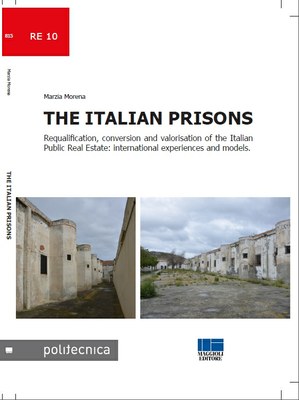
Marzia Morena
The Italian Prisons
Requalification, conversion and valorisation of the Italian Public Real Estate: international experiences and models
Maggioli Editore, Sant’Arcangelo di Romagna (RN)
Anteprima
What could be the commercial and landed value of prison buildings that are located inside towns and which are of a great historical value? The issue is that the Italian Government is unaware of the answer. Even if the Italian Government knew the answer, they would not be able to properly manage such a vast amount of buildings, because they lack the competence to do so, which has been widely demonstrated thus far.
Some of these prisons are still located in the old centre of some towns, in environmental havens, or tourist resorts and could be converted into other destinations of use. The State Property Agency has already taken steps in this direction, by planning the functional renovation of prison-like buildings such as barracks and public buildings, which are currently occupied by administrative or ministerial offices. The current occupants would be moved to newly developed areas far from the old town centres and would be well connected by efficient transportation infrastructures. Therefore, why not start this economic circle for penitentiary buildings as well? Firstly, private enterprises and entrepreneurs’ associations should be involved, through a fully transparent and adequately remunerated process, in drafting an intervention program that will gradually collect information on the public property stock. This would simplify the process whereby the censed buildings will be reconverted to the most suitable functions.
There is only one obstacle between this theory and practice: the scarce liquidity of the State, particularly in the most recent years. How can the State therefore raise the necessary funds to put this idea into practice? The only solution lies within the active involvement of private companies. However one question comes to mind: how can private enterprises be involved in the financing of public works as represented by prisons?
